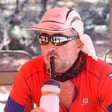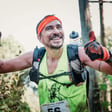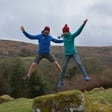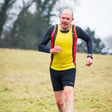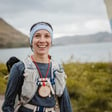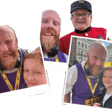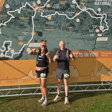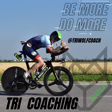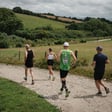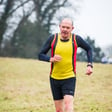Become a Creator today!Start creating today - Share your story with the world!
Start for free
00:00:00
00:00:01

Strength & Conditioning | Alex & Josh from SOAR Today.
Welcome to episode #65 of the UKRunChat podcast.
In this episode we welcome Alex and Josh from our new strength & conditioning partners Soar Today.
Alex and Josh have vast experience in the S&C world including being involved in 6 major championships, which includes multiple Olympic games with Team GB.
This is the first in a series of podcasts we will be recording.
Listen to hear us chat about the following and more:
What is Strength & Conditioning?
What are the two significant factors of injury risk for runners?
Why resting is not enough to prevent future injuries?
You can take the free risk assessment here so you can receive your personalised report via email, so you too, can reduce your risk of injury.
Follow SOAR on:
Transcript
Introduction and Guest Backgrounds
00:00:00
Speaker
Welcome to episode 65 of the UK One Chat podcast. I'm Joe Williams and in this episode I speak with Alex and Josh from our new Strength and Conditioning partners, Soar Today. Alex and Josh have vast experience in the Strength and Conditioning world including being involved in six major championships which includes multiple Olympic Games with Team GB. This is the first in a series of Strength and Conditioning podcasts we will be recording.
00:00:27
Speaker
Any feedback, please email us on info at uk1chat.uk. If you'd like to leave a review on the favorite podcast platform that you use, that'd be great too. Enjoy this conversation with Alex and Josh, and see you on the next episode. Welcome Alex, welcome Josh, how are you both? I'm good, thank you, thanks for having us. Yeah, likewise Joe, thank you for having me. You're never quite sure when there's three of you on one of these, who answers first?
00:00:57
Speaker
I'm going to tend to pass the mic to Alex first, and then I'll pick up after. There we go. We've got a plan. We've got a plan. Well, as I said in the introduction, you're our new strength and conditioning partners on UK Run Chat. Welcome. Welcome to your first podcast. Yeah, I'm really looking forward to discuss all things strength and conditioning, which would be good fun.
00:01:21
Speaker
Yeah. Good. Good. You've, you've already, um, took a part in a couple of chat hours, aren't you offering advice, hate to all runners? How did you find them? I found them great. I'm continually amazed at really how engaged the running community is online. Um, I think it's really worthwhile for us. It gives me a lot of value to give people answers to their questions and just in, in honesty, just be able to talk to all the things, shop all things, S and C with, uh, with interested people.
00:01:49
Speaker
Good. Good. I kind of piggyback on the back end of it. I love SNC, I suppose. It's probably the best way. I would love talking about it, I should say. So you've given me an hour platform on Twitter to let me talk about my ramblings.
00:02:06
Speaker
is probably the best hour I got all weekend, I suppose. And I shouldn't say that, it's my kid's birthday, but it was the second best thing I did all weekend. But yeah, I just really, really enjoy, really enjoy being able to converse and have discussions around. And I think one big thing that I'm sure we'll get into this is what I take for granted as normal. And actually, that isn't everyone else's reality. And being able to kind of explore that is I think is really, really useful to understand what everyone's doing.
00:02:36
Speaker
Very good. How old was your kid? Beatrix turned five. Go on 15. Happy birthday, Beatrix. Yeah, it was my eldest. Last week as well, he was 18. So, January birthdays. On top of Christmas, so great, his parents, aren't they? Yeah, he spends the time of the year for you both. Well, you kind of forget it, that someone's birthday after Christmas, and then you suddenly, ugh, you've got to do something.
00:03:06
Speaker
Yeah.
Founding Soar: Motivation and Mission
00:03:08
Speaker
So let's start, why don't you give us an introduction to your both and your experience, you know, and that'd be a great way to start. Cool. Okay. So I've spent probably over two decades, probably definitely over two decades now working in elite and high performance sport, both in the UK and around the world. I've spent
00:03:31
Speaker
16 years in the UK working with the English industry of sport and UK sport and supporting Team GB at the Olympic and Paralympic Games. More recently, since 2019, I set my own business up of which store is this and one of them. And the reason for setting all of this up for me was it came from a point of frustration, I suppose. And the frustration was that
00:04:01
Speaker
it became really clear that what I was doing was not exclusive to the elite world and so on. And actually what I was finding when I texted my family and friends, actually what I was giving them as kind of bits of advice was effective for those individuals that it was for everyone I was working with. So without an omission really, just to try and make it easier to get access to the kind of content that we
00:04:30
Speaker
Sorry, the experience and expertise I've developed over the last two decades to make it much more applicable to the real world for everybody. And that's across the three businesses that I work with. That's kind of the mantra for all is that we talk about availability and accessibility. Availability is the opportunity to get really
00:04:54
Speaker
credible and evidence-based and practically applied content and the accessible bit is that it's in a way which you understand that it's simple enough to be able to have an impact. That's kind of been my mantra for the last three and a half years now. That's what I've been trying to do and what I can't believe it took me 17 years to get to that point to realise that's what I really wanted to do. But I'm there now and probably enjoying it more
00:05:22
Speaker
doing this than I ever done in any other part of my working life. So yeah, that's me on a six months. And so you mentioned working with Team GB and the Paralympics and the Olympics, which were you involved in? So I've been involved in six games, Olympic games. So Beijing was working with
00:05:49
Speaker
lots of multi-sport athletes. I wasn't actually out in Beijing. London, I was working with British Raring. I was over at Dornley Lake in Eton. Rio, I was out in Rio and I was heading up the performance services out there. So I was, you have the Olympic Village and a lot of where the competition is. And then you had like a hub, which was at one of the British schools, which was just outside times. I was there overseeing all of the services of strength conditioning.
00:06:16
Speaker
nutrition, physio, medicine, and that was basically a training hub and a rest and recovery hub for the athletes. So it was based out there. There was about 30 staff there looking after that. And then I worked with the Chinese Olympic Committee for Tokyo, but I've also been involved in two winter games for, I can't remember, Vancouver and
00:06:45
Speaker
Oh, it was before Vancouver. Whatever the other one was. I think it was Torino in Italy. Yeah. Some of those sports in the Winter Olympics are, they are brave. Those half pipes and stuff that they're chucking themselves down on the ice. They're some brave people in there. Yeah, brave and slightly
00:07:06
Speaker
unhinged I think sometimes as well when you put your ski jumpers, the ones that get me where you just come off a edge and you're just accepting that you're jumping a hundred and twenty meters before you make a landing and he's like, you're not sure I'm going to make the landing. Yeah, that's crazy. Wow.
00:07:25
Speaker
I always got hooked on that. It's not actually a winter sport that I participate in, but I do get hooked on the games. They're exciting. Very exciting. Wow. So that's a lot of games you've been involved in. And Josh, do you want to give us any introduction to yourself? Absolutely. It's not as an illustrious as a CV as Alex is, but it's in and out. It's in and around the conditions. So I've probably been in around the condition or
00:07:53
Speaker
coaching for the last seven years. Firstly, during my kind of undergraduate studies as a sports exercise scientist and working within junior academies for rugby. And then more so as a graduate moving abroad to Asia and one working full time in a national rugby team, kind of intern rolling for the kind of men's 15s and then picking up some paid work around the age group stuff and the women's rugby.
00:08:21
Speaker
and all fantastic experiences personally and professionally and actually had that curiosity to combine probably my work with other demographics really and work privately with executives and just understand that the philosophy or the approach to coaching wasn't really different irrespective of the goal at the end, one being perhaps performing on a weekend and winning a match and the other one being somebody in the boardroom wanting to be
00:08:49
Speaker
cognitively there or have a stable energy to play with their kids after work, the approach wasn't too dissimilar. And it kind of led me to have this curiosity to try and scale up my impact, I think. I've always loved being able to teach your coach. My mother was a teacher, but I've always wanted to do on a larger scale as possible, impact as many people as possible. I think it became a little bit disillusioned with the idea that
00:09:17
Speaker
all the specialism and solutions that one has is contained for people either of an elite sport nature or individuals with a high disposable income who can afford to pay on an hourly basis. So I actually returned to the UK and was just trying to find some additional work or other routes to employment. I actually met Alex and shared with me his idea around kind of
00:09:41
Speaker
in the agreement of being able to kind of democratize access, truly democratize access to elite kind of support and trustworthy information. And that is the mission for SOAR. And that's kind of what I really believed in. And for there, it's been just really understanding what that is and how we can unpack that into a service and importantly, just give value to people and make it available to people.
00:10:06
Speaker
So it's interesting you both mentioned in there, so you mentioned Josh about specialism and Alex mentioned about it being frustrating because the information wasn't necessarily accessible to all. When I think of strength and conditioning at an elite level, I imagine, I have not been at an elite level athlete myself, but I imagine
00:10:32
Speaker
Lots of machines and you see people when they're preparing to go off and run across the desert. They're in heat chambers and they're wired up to oxygen masks. I imagine lots of science behind it. So it's interesting that your output with this is making strength and conditioning applicable to all, available to all.
Making Strength and Conditioning Accessible
00:10:56
Speaker
I wonder how many other people see it that way the same way as I do.
00:11:02
Speaker
Yes, good point. And I think one of the other businesses we run basically is all about trying to make strength conditioning much more accessible. And where we start with that, which is why this becomes really important and why SOAR probably does what it does, is this idea of
00:11:24
Speaker
truly understanding what you're trying to change. And we call it basically our problem-solving framework. It's like, what are you trying to change? And then what do you have available to make those changes? So you are right. When you're in the elite environment, you have opportunities which may not exist to everybody else. But even in those environments, you still got constraints about you and the way in which you problem-solve and trying to determine what you're trying to change.
00:11:50
Speaker
that way of thinking doesn't alter. Now, if you just bring that back down to anyone else's environment and their context, the same question still needs to be asked of like, what are you trying to change? And followed up by, well, how do we make that change? And that's where kind of the premise of Saw kind of still anchors against. It's all about recognising that people always want to move from point A to point B, and it's recognising
00:12:19
Speaker
what point B is and what difference point B will make to that individual and then it's then well okay we know what we can what we where we need to get to and the difference it will make well then we can work out how we can effectively achieve that and then we then move on to well how will we know if we've achieved that which is where and then we'll probably get into that in a little bit around some of the risk assessments and so on and why they become so important because when I talk about the frustration bit and the frustration actually came from
00:12:50
Speaker
Again, friends and family talking about bits. I asked a question and you've heard us in the chat hours talk about where you go to get your credible information. Well, the internet is huge. Like genuinely, like when you type in certain things, it is almost impossible to put a credibility marker on what information is out there. And the second bit is,
00:13:13
Speaker
I get a sense that there's quite a lot of generic stuff out there about, well, if you do this, this will help. But it's basically three times 10 of this. And it's like, well, three times 10 of this might be useful for the first session that you do, maybe the second or third. But if you're three years experiencing that, three times 10 is not going to be doing all that same exercise. It's not going to be doing the same thing as what it was three years early. And that's a bit around the frustration bit. It's like, how do you get people
00:13:43
Speaker
engaged in this and actually apply it to their circumstance and allow it to be kind of personalized to what they need it to be around what they're trying to change. And that's kind of where I kind of feel there is no difference between the elite level and the non-elite level. They're still answering the same questions. They've just got slightly different constraints placed upon them. Okay. So let's strip this back.
00:14:09
Speaker
and define what strength and conditioning is. Because if I think about strength training, and I'm a fan of martial arts and cage fighting and boxing and things like that, and you often hear the word conditioning used in, well, I hear it, when the commentators, they talk about an athlete being well conditioned, and I've associated with
00:14:35
Speaker
their shins are well conditioned, they're getting kicked and that kind of thing. So what is strength and conditioning as opposed to just strength training? Define that for us. It's a really good question actually.
00:14:50
Speaker
I think we've been getting a philosophical approach after I get that bit out of the way for that. Shrimp conditioning I think probably is not a true representation of what we really do. Physical preparation is probably a better description and that physical preparation is being able to
00:15:09
Speaker
physically prepare individuals for the demands and the rigors of whatever task they're doing. So as you say, if it's running through the desert for the 250 miles or it's simply doing your part quantified, it really doesn't matter. But from a strength conditioning point of view, strength basically is the ability for muscle or group of muscles
00:15:33
Speaker
to produce a force and different types of force. So how hard, also how much, so kind of just the biggest amount of strength you've got, how quickly, so the speed at which that force is applied and timing which is basically is it applied at the right time. So when you imagine the foot hitting the floor while you're running
00:15:56
Speaker
There's three bits. How much is force needs to be? Does the body need to generate to hit the floor? How quickly does it need to be able to absorb the forces that are being applied back to it through the floor and the timing? So if any of those are slightly out, so if it's not quick enough or at the wrong time, then you'll get forces going through the body which hurt you, which is why strength becomes really important because you need to be able to remove that risk.
00:16:26
Speaker
Conditioning then can be broken into two areas, which is one is really a fitness, which is can you sustain and repeatedly sustain what you're doing? So again, for running, like the ability to have how many ground contacts during a 5k or a marathon, whatever it is, that there is a degree of conditioning required. And we, you know, on the chats that we've had,
00:16:49
Speaker
the chat hours, we spoke about plyometrics and actually one of the things I've probably said at least once is the energy cost to run a marathon, about 25% of that energy cost comes from the tendons and the ligaments of your foot structure, the tendons of the achilles and the pretend tendon. So the repeatability or the conditioning bit is are your tendons and your foot structures able to be able to repeatedly sustain
00:17:19
Speaker
the ability to generate energy for you to run. And then the other bit is just generally your heart lungs, which is, are you fit enough? Can you bring in enough oxygen to re-oxygenate your blood? Can you pump enough blood to your working muscles to be able to allow them to be oxygenated and fueled to be able to do what they do and then making sure that you have enough energy
00:17:46
Speaker
through your stored carbohydrates in the muscle, in the liver and the carbohydrate you consume. But really when we look at conditioning we talk about the ability to continually sustain
00:18:02
Speaker
loading on a body tissue. So when you talk about mixed martial arts and the shins are well-conditioned, the shin is well-conditioned to continually take a beating or give a beating, I suppose. Has it been running? Exactly the same. That's why it becomes really important. If you've got a really high strength level, but you've got a really poor conditioning level, my own research and the research out there,
00:18:31
Speaker
would suggest that you are unlikely to be able to do what you require because your conditioning just isn't high enough to be able to put enough training in in the first place to even get better. And that's going to be the limiting factor just because you can't actually put enough load through that part of the body to run. Anything to add, Josh?
00:18:58
Speaker
I would stress that, and I do believe this too, I think strength condition is a label. It's probably evolved from there. It's probably a bit more holistic and sophisticated than it suggests. And as Alex said, it's kind of physical prep or could even be athletic development, but ultimately it's about understanding the physical demands of the task that you're undergoing. And with that understanding, be it through a needs analysis of the sport or task, or actually in conjunction with your own testing, evaluating what qualities do I need physically,
00:19:28
Speaker
And then testing and comparing myself against standardized scores in those qualities will allow us to understand almost those physical gaps within your ability to sustain or to perform in that task. So importantly, it's about understanding the demands of the sport and then prescribing intelligently around those areas you must improve within those demands.
00:19:53
Speaker
You both mentioned testing and I'll come back to that in a minute because as a running hobbyist, it isn't something that I think about. So it's really interesting. We'll dig into that in a little bit. I love that physical preparation. So that is what strength and conditioning is. So essentially running is strength in motion. Is that right? Yeah, absolutely. If running
00:20:20
Speaker
does two things it has the opportunity to change the respiratory and cardiovascular system and it also has the opportunity to change the physical structure of your muscles and tendons so you know what it's like when you do hill runs or if you're running down a hill or you do some higher tempo based work like it all of that has an opportunity to do that so you can actually manipulate running to change
00:20:51
Speaker
certain aspects of the physical, not just the physical, it's all physical, the kind of the muscle tendon side of it or not just the heart and lung side of it. There's a common theme, you see it on Twitter a lot, about zone two running. And what you're describing there in terms of fitness and bones and tendons and adapting over time is the
00:21:19
Speaker
That just solidifies that these long and slow runs, the repetition is very important, isn't it? Yeah, absolutely. So having worked with endurance runners, and a long time of rowing as well. Zone two is the staple, I suppose, of their physical diet. And there's
00:21:46
Speaker
many reasons why they might be doing that. But this has come from a rowing coach, not a running coach. But fundamentally, what he describes is that the base level of fitness has to be developed, which comes back to that conditioning part. You just have to be able to sustain the rigors of training and competition. And actually, the reality is in a week, training has
00:22:14
Speaker
higher physical demand than the competition itself so you just have to be able to sustain the training so the training can actually be positive for you. But then he also talks about this idea that you have to be resilient and to be resilient you need to be able to have many many rowing strokes or ground contacts while running
00:22:35
Speaker
to be able to develop the tolerance to be able to do that. So you do get this kind of fitness base, but you do get the conditioned base of the kind of the muscle tendon base just by doing large volumes of that. And I know some people are starting to contest whether or not there is a need to do all of that. But for me, you still do, but you can still manipulate the training around it to get some of the other bits that you may not get elsewhere.
00:23:03
Speaker
Very interesting. Something for a future podcast, I think. Because it's so regular that you see it spoken about. And then some people follow it with, yeah, but I'll get bored. Yeah, well, imagine, as I said, working a lot with a mower, you're imagining a mower machine and you're having to do 20 kilometres on a mower machine and all you've got is over the wall in front of you.
00:23:30
Speaker
or the person's back of the rowing machine in front of you. And that's all you see for that. That is boring compared to running. At least you can potentially be out and about in some interesting places. Yes. So I don't know the percentage, but there's a lot of runners get injured and a lot of runners get injured every year.
Understanding and Preventing Injuries
00:23:55
Speaker
You work across different sports, both of you. How does this compare to other sports that you work in? Is it high? It's all high, if I'm honest. You'll see on our website, we talk about 50% of runners will get injured each year. So it's literally a flip of a coin. Every runner out there, whether or not you come back healthy or not, which seems really
00:24:25
Speaker
really quite, really quite demoralizing in that sense. But when again, when you're looking at against some of the other endurance sports, and that'll take wearing again, again, rowers will, over 50% of them will have a low back pain within a year as well, so become injured. So it's fairly comparable to kind of more of the endurance-based sports that are out there. And interestingly,
00:24:54
Speaker
One of the big things for all of this is there's two significant factors and there are many, but there's two significant factors which contribute to that risk. One is previous injury. You're more likely to be injured if you've had a previous injury in that site. And I'll get into that in a little bit more in a second. The second bit is rapid changes in training loads. So if you suddenly
00:25:19
Speaker
or your regular park runner running two, three times a week between three and 5K a week. And you're like, you know what, I'm going to do a marathon. And you suddenly go from 5K to 20K in your first week. Well, that sudden spike is known to be a significant risk within the injury. And then when we're, so that definitely can be managed. The previous risk of injury,
00:25:50
Speaker
I will sell them out and I'm not sure if my brother-in-law and my sister would listen to this or not, but they're both doctors and they both injured lower limb injuries through running. The reason why I say previous risk of injury is a significant factor to predicting future risk is because of this behaviour. I hurt my calf muscle. What did you do? I rested for 10 days and I went back out again.
00:26:18
Speaker
So what you basically say is I've damaged my calf muscle. So you've changed the structure of the calf. That calf is no longer possibly able to tolerate the loading that it was able to do before you got injured. And recovering hasn't changed that structure any further. You've just allowed the inflammation and the pain to go away. And then you're going to run on a calf muscle, which is no longer able to tolerate what it could have done two weeks earlier. And then you wonder why you get injured again.
00:26:47
Speaker
So fundamentally, resting recovery is not enough to overcome injuries. It stops the pain and the discomfort and the inflammation around it. But that's kind of the mindset of a lot of people, which is just to stop. It's not just about stopping. It's about, OK, you need to recondition that muscle and that tendon to be able to tolerate what it was able to tolerate before, but probably even higher than what it was previously.
00:27:16
Speaker
And the bit about that, and so I'm going on here, but the other bit, it's also, when I say preventable, you can definitely control that to a degree just by simple exercise. So that's to give you a protective effect. Yeah, I think it's interesting that the change of intensity particularly interests me because it all boils down to in its most fundamental form is stress. It's like training yields stress. Stress is in a bad thing. Stress can be a good thing.
00:27:43
Speaker
I think the body, the body itself has no, there's no buckets of stress. You can't put, you can't put financial stress when it comes in into the financial bucket, physical stress. It all just manifests into one place, but our ability to tolerate stress is finite. So we have a certain amount we can tolerate. And if we overdo that without sufficient recovery, something is going to happen. Something, something could be catastrophic. It could manifest itself in the mental health. It was down there, but from a training perspective, it could become overuse injury. So importantly,
00:28:14
Speaker
I look at it about you have to understand your own physical, physical capabilities to start with. And then you, you should train within those. And Alex will probably allude to, well, I'll mention Alex can kind of open a bit more is this thing called habitual capability, which is understanding how much you can do, but not testing those boundaries too much and actually working in kind of a minimal effective dose environment. So doing just enough to yield adaptation, but also it being a recoverable intensity as well.
00:28:42
Speaker
And if I look at it, I think about if we work to our physical ability, we work to a ceiling. Once we get to that ceiling, I don't want to knock out chunks of it. I want to just chisel bits away because if I begin to knock out chunks of it, it's going to challenge my ability to one recover from those demands, but to repeat that training as we go. We're always trying to train for tomorrow. We're not, we're not about trying to create as much stress and, and damage today that we can't pick up and, and operate tomorrow because ultimately.
00:29:09
Speaker
Most of the things we're doing within physical prep and SNC are actually just enabling us to do the thing we love again and again and again. As runners, we're not here to be, to perfect our squat bench and deadlift. And it's funny when we mention the Olympic lifting conversation, it's like fundamentally always ask, what are we doing this fall?
00:29:29
Speaker
Is this going to improve my sport, my hobby, my domain? And if the answer is yes, then we can probably begin to utilize it. But if we can't quite justify actually why we're doing this, it's probably a better alternative instead. So it's all about understanding exactly what it is and why we want to do it. And then managing the amount of load we utilize within that environment. And it brings you back to that kind of previous injury. Most injuries are preventable.
00:29:59
Speaker
There's always, most tissue is trainable and can adapt. And if we understand what those demands are of that tissue, i.e. the foot and ankle, for example, how much force goes through the floor on a repeated basis, and we can understand how much that is, and we can begin to train you up to a level which can tolerate that over an extended period of time. And I think the difference between sports is that
00:30:22
Speaker
It's just a different precursor of injury. So if we look at like an endurance sport, it's more often than not, it's overused. It's doing repetitive tasks in the same movements. And if there's an inability to tolerate those tasks physically, something's going to manifest an injury. If we compare that to the likes of the sport you're interested in, MMA or martial arts or more combat sports, or even the sports I work within within rugby, they're a bit more chaotic in nature. So.
00:30:49
Speaker
Although they are preventative and preventable, it's about us understanding what those common and vulnerable injury sites are within that sport. So for example, if it's rugby and I know I have my arm extended out and I long leave a position here to make a tackle, I'm probably going to be challenging the rotator cuff during contact. Particularly if there's really sudden change of direction, I might not always get technique right every time. So with that information, I now know I can take a preventative approach to improving
00:31:19
Speaker
the shoulder external internal rotation, for example, to build my resilience for the sport itself. Go on, Alex. I was just going to say, yeah, just bring that back to running. Like 80% of all running related injuries are overuse. 80% of those overuse injuries happen at the knee or below. So you can quite quickly see how you can start building a picture of like, well, we can
00:31:48
Speaker
We can't train to traumatic injuries like falling off a curb or whatever it might be. But for the overuse, you definitely can do that. And then we definitely know the manifestation of injuries is knee and below. But our bit is that we know where the injury sites are, but we also know the injury site isn't necessarily the reason why that injury occurred. It could be somewhere else, which is where the risk assessment gives us a little bit more insight around that.
00:32:17
Speaker
So let's move on to that. You mentioned the risk assessment there. So tell us about SOAR and what it is that you want to achieve then. Yeah, okay. So SOAR, it doesn't just work with running at the moment, but running is our first endeavour. SOAR was entirely set up to make
00:32:41
Speaker
make credible available, credible content available to the mass populations of runners for this, for Ready to Run. And the idea was that we want to be able to allow people to continue to do the things that they love doing the most, which for runners tends to be running. And actually the thing that stops people from running is often the injury that's
00:33:10
Speaker
that has occurred and our bit was well actually if we can give you something a bit more around preabilitation so like just a small dosages of exercise which can can prevent or reduce the risk of those overuse injuries then then that's a really good thing because it doesn't take out any any significant more amount of time of your week to be able to do these exercises you know at its peak you're talking three lots of
00:33:35
Speaker
just on the 30 minutes of work throughout the week. The other bit is making sure that it can be done anywhere and anytime. So you don't need an expensive equipment, you don't need to go to a gym, you can do it at your home, you can self-administer it.
00:33:50
Speaker
And the idea is that it just makes it much more accessible because you don't need to have to do all these other things like in terms of buy lots of equipment or go to a gym or buy a personal trailer to do that. And the idea is that when we said it before about democratization, we've
00:34:09
Speaker
Tom, who's the other co-founder over three decades of experience, really refining down all the things that we know that work and removing the things that we think just doesn't really matter right now and get it to a point where you don't have to do that research or that bit. We've done it because we've done it with thousands of athletes and individuals. And we can say that these are the things that become really important. So if you do these, we know that it makes a big difference.
00:34:37
Speaker
alongside that. And one of the questions we often get back is, well, you've worked with elite athletes. So it's like, you know, they've got all the time in the world and this and the other. So that's right. But we base it on the Pareto principle, which is you get 80% of your physical change by doing 20% of the work. So we never get we get you to this level. And you don't need to be coming up here like that. We know that's enough. And enough being that you should be if you've got the standards that we say that we think are important.
00:35:06
Speaker
you should reduce that risk of running related overuse injuries because we know that that body part is can tolerate tolerate running and for elite athletes they have to spend the extra
00:35:19
Speaker
20 hours a week to push that final 20% and nobody, unless you are the athlete who listens to this, then you don't really need to be pushing that because it's not going to change anything for you significantly. It's just going to take time away and you might get a little bit better and not significantly better. And one of the big things that we've always come back to is that for this to be genuinely impactful for people, it can't be just here's a
00:35:48
Speaker
Here's a 12-week program, which is generic and just, it kind of just progresses on week on week out. And it doesn't really take into account what we said, what are you trying to change and how are you going to do that? Which is where the risk assessment comes in. So based upon what we know of running and what we know are the high risk factors.
00:36:06
Speaker
the assessments in there are four physical assessments, one looking at hamstring capacity or conditioning, one is looking at calf conditioning and the other two are looking at hamstring and quadricep mobility. Now there are a few others but one of the things we know that if you're good at
00:36:26
Speaker
one, you tend to be good at all. If you're bad at one, you tend to be bad at all. And if you're average at one, you tend to be average at all of them. So there's this kind of the research that we've done on this is showing that generally for about 90% of the people, these four assessments will give you a comparable assessment of what your risk is to running on all the four sites. So we look at ankle, foot, hip, trunk, and knee.
00:36:52
Speaker
And we can basically say we think you might have a slightly higher risk of knee related injuries based upon your scoring or slightly higher or lower risk around your trunk based upon these areas here so that we can then say these are your risks and then you can then get a training program which then purposefully targets your weaknesses.
00:37:14
Speaker
So it's not like a just just just generic thing. It's like a use. We've worked out what we can change that. And we also know that after 12 weeks, we can probably make between 100 and 150 percent improvement on your your business. Is that right? Josh, it was about 100 to 150 percent. Was it a little bit? Yeah. Yeah. So even after eight weeks, it was about 80 or 90 percent improvements of of change in those those areas.
00:37:44
Speaker
So how have you got those numbers? How have you tested that? So we pre-tested this last year with a number of individuals and non-elite athlete populations. And they came in and did the testing, did a 12-week training program. And then they tested throughout and we were based, I think they tested it
00:38:13
Speaker
week 0, 4, 8 and 12 and we track their progress and you see their change in their risk assessment scores as they improve and therefore as their scores improve, their risk decreases. Now when we look at that, if I'm sorry, I was about to say something there. This is the bit that
00:38:37
Speaker
testing and risk assessments, not like risk assessments. What are we doing here? I like to go out for a run. I enjoy going out for a run. I like doing park run. I'm signing up for half marathon. Why am I doing a risk assessment?
00:38:53
Speaker
you know, that's something that happens at work in the HR department. That's, and you both mentioned testing and this is a real mindset shift, isn't it, for someone to actually, because you just go out and run or you just go out and you go to the gym and you try and get a little bit, but you know, this is a real, putting your stake in the ground as to where you're at, where you begin, isn't it?
Testing and Risk Assessment for Runners
00:39:17
Speaker
Yeah, you know, testing is no different, not different from running though, is it? Like running at, there's so much stuff you can get on the internet about how you can get your running pace for your zone two running and, you know, all the endurance sports find ways to test the fitness, almost the fitness side of it, or to be able to say, my heart rate needs to be at this level for this type of intensity of work, it needs to be at this level.
00:39:44
Speaker
So testing always exists. What we're doing is just extending it to say, well, it also exists. Well, you have a parts of training, which we should, we should also consider as well. Yeah. Yeah. I think like if, if a runner and I like any sports person would, was to, was to work with a coach, we're trying to try and pursue that performance. They would be, that there would be prescriptions involved in, in the sporting element of their training, particularly from runners.
00:40:12
Speaker
running an X zone or X time spent at this heart rate or percentage of the heart rate max. So there's always been an environment whereby there's prescriptive nature to them pursuing their sports. And I think it's no different, the philosophy is no different in terms of then physical preparation of those sports. What testing does is it allows us to collect data and with that data, we could hopefully be empowered to make more accurate decisions or start better conversations with that data. And really all it allows us to do is be very deliberate
00:40:41
Speaker
and accurate with the prescription of training. It's one thing turning up and ticking a box. It's another thing actually being very deliberate and concise with that time you spend. Because everyone is time poor. It's about how can we package something up which is minimal in terms of its time commitment, but actually maximal in terms of its effectiveness of getting you where you want to be.
00:41:06
Speaker
So take me through that testing there, Josh. Alex went through the various things there. So I'm listening to this podcast now and I want to go and do this risk assessment on where I am. Take me through the process. What do I do? There's four tests and they can all be self-administered. So we've kind of produced how to follow along videos and you better find them on our
00:41:29
Speaker
on our website, sword.today. But those four tests, as Alex mentioned, there's two around kind of capacity, one being for the lower leg injuries, and that's a calf raise, and the other one being around the hip, and that is kind of a hip bridge. So ultimately, with the follow along videos, you'll be able to one, discover the standards of the test. So the test is only as good as the kind of standards and the rules that we put against it. And hopefully, this is removing this kind of margin for error around
00:41:59
Speaker
and discrepancies or anomalies in results. So providing someone follows instructions about this is actually, this is a standardized repetition. If you can then begin to recreate the repetitions, then they count towards your test scores. Here's also three or four errors which we might perceive to be expected within this test. So invariably as fatigue sets in, we still want to try and achieve as humans innately, we still want to win. We still want to try and achieve the best results, but ultimately we might be sacrificing technique to do that.
00:42:28
Speaker
And in terms of a fair indication of how you are, we need to be quite deliberate and quite disciplined around how we execute those tests. So there'll be instructions on how to accurately complete the test and what those repetitions or what those positions from the flexibility standpoint look like. There'll also be some rules around administering the test. For example, this is how long each repetition should be, or this is how long you should hold this position in flexibility for.
00:42:55
Speaker
And there'll also be some common errors to look out for, which with some kind of self-discipline and awareness, you'll be able to spot and say, well, actually, of the repetitions or of the positions that fell into those error brackets, they wouldn't count towards my results. Once then you kind of collect those results, there's a form underneath that. So you'd simply input your details, input kind of where you are in terms of the participation pyramid of running. Are you an occasional runner? Are you a regular runner? Are you an elite or experienced runner? But importantly, then put your results as well.
00:43:25
Speaker
What those results will enable us to do is cross reference your data set with the one that pre-exists for us. And with that, we can understand one way you sit internally and how you sit against our own internal standards of each test, but also how you fare against people within our, within our data set as well. And perhaps with people, how you fare against people within your own participation area. So how do you versus the rest of the occasional runners sit and what are they doing or what are the gaps that you have compared to them?
00:43:56
Speaker
So I did the calf raises before we started this recording. I was amazed, shocked rather than amazed, that I can do almost 100% more on my right side than I can on my left side with calf raises. My left calf is so much weight and I had no idea until I went and did that. There and lies are really
00:44:26
Speaker
While we don't literally talk about left-right differences so much, but it does highlight a really important factor there, is that one side of your body is more tolerable to running than the other side. And when I spoke about my brother-in-law and sister, when I just stopped running and when I got injured, my sister was a calf and I did exactly the same thing.
00:44:51
Speaker
Um, and she could do, I think half a repetition on one leg and maybe five or six on the other leg. And I was like, well, maybe that's where we should start getting you back to, back to fit. It just gives you, it gives you a point of knowing how much, uh, load you need. And Josh spoke about this about habitual capability and the habitual capability is just what your body can tolerate at any given point. So if your habitual capabilities here, which is your base, your test score, you start, you just below that.
00:45:21
Speaker
So that because if you start just below that you can get more volume at something which is not maximal than if you're at your max. So we can just build that volume up and that habitual capability when you retest, retest, retest gets you up to this point here. And that's the beauty of this. Like it does generally put your mark in the sand of like, okay, this is where I'm at. And you know where you need to get to. And a program will be written for you, which moves you closer to that new standard.
00:45:51
Speaker
It was a very simple thing to do as well. If I go to the gym, I use the calf raise machine or the donkey calf, that kind of thing. You're always using two legs and they don't, naively, don't do single legs. But it was just like, wow, that's a significant difference. How did you get to, obviously your experience over the years, but these tests are simple. How did you get to that level of simplicity with it?
00:46:19
Speaker
Yeah, that's a good question. When I spoke about the work in the elite environment, we still have constraints against us, which often end up in hotels with no training facilities, and you'd have to work out ways to train. And so ultimately, my mindset has always been geared to how you can make things as simple as possible. But then when we were starting to try and scale this to thousands of athletes across 40 or 50 different sports,
00:46:50
Speaker
As soon as you start bringing in equipment, you're then starting to say that every single sensor needs these bits of equipment. And that becomes really, really challenging. So that became like a kind of a cost constraint, which we were like, well, we can't do that. And then when we did do some
00:47:06
Speaker
testing between like a calf raise but it wasn't necessarily on the calf raise machine but for this example if it was doing a calf raise on a machine or body weight calf raise what we found was there was literally no difference in the test data like the test data of doing body weight or or quite of the tests that we've done in these risk assessment versus using machine it told us exactly the same story like so the the scores might be slightly different but when we did the
00:47:35
Speaker
the statistical analysis on it. If you got 15 reps on a single leg calf raise and you got 17 reps on a machine calf raise, and when you looked at all the data, it told you exactly the same story. You're either good enough or you weren't good enough. There's a difference to your left and your right. So it was like, well, why bother doing something which you can get exactly the same story or narrative around what the testing's there to do in the first place?
00:48:03
Speaker
So we went down that route and then spent years, genuinely years, probably eight or nine years validating these as genuine measures of what it's supposed to be measuring. So if we're doing a calf raise, funnily enough, it does actually measure calf raise or your calf capacity or your calf condition. And the reliability that if you were to do it again tomorrow, would you
00:48:30
Speaker
would you get a similar test result? Well, not so much. You might be a little bit sore after doing max today, but in 48 hours, would you be able to do the same? So the validity and reliability became really important for us. And we found that by giving really detailed instructions on how to complete that, and you'll see from the test on there that it tells you how to set up and make sure you've got your shoes on.
00:48:53
Speaker
Just removing all of that, it means that you removed the error that's normally associated with this. So we put it down to a really good small level of error. And that error was roughly about one and a half to two repetitions. So if you get a change in two repetitions or more, you can say that's a genuinely meaningful difference to what you were when you last tested that, which is really good because then we can then say there is a significant change in your performance.
00:49:22
Speaker
And then we've done that across the trunk, we've done around the hip, the hamstring, the knee and the ankle. So we've managed to do all of these and basically we've got a highly valid measure of body area, highly reliable in that you can repeatedly do it and get a consistent score back. And we also know, which I think is the most important bit, what standards are. So we've now worked out what good looks like.
00:49:48
Speaker
and everything below that. And I think that's, that's where we've got to through this. And the simplicity, this makes it even easier for us to then deliver it in the way we're delivering it right now. Yeah, I think I like it. Sorry, Joe, I just think it that natural evolution of how how you got to where you are with testing, given just improvising against the constraints you had, actually is a really nice
00:50:17
Speaker
is to realize integration to the values we anchor ourselves in anyway, in terms of building something which is truly accessible and truly available to people. And in that becomes simplicity. And it's interesting working with Alex for the last year and shaping a philosophy as an S&C coach or as a physical preparation coach. You leave education and you need to have a program of all the bells and whistles and fits with the current trend or fits with the current research. But ultimately,
00:50:46
Speaker
The best program is the one you can adhere to. And first and foremost, it needs to be adherence for an athlete to create meaningful, sustainable change. And typically, adherence comes around understanding what is on somebody's plate, what are the demands they have, and how can we build something which integrates complementary to those demands. And typically upon that comes the simplicity of training. How can we get it done easily as possible and as quickly and in a time-efficient manner as possible?
00:51:14
Speaker
And that will begin to build that likelihood of success of them coming back tomorrow and doing it again.
Personalized Training Programs and Community Engagement
00:51:21
Speaker
So what happens after I've completed that risk assessment? You get a individualized risk assessment report email to you, which identifies what your total risk score is. So are you?
00:51:41
Speaker
at high risk of injury or moderate to low risk. And then it will identify the key for areas where your risk mostly lies. And then off the back end of that, you have the option then to purchase a training program. And the training program will basically be written exclusively to your test results.
00:52:08
Speaker
and it will target those areas based upon that. And that's it really. So unlike buying this training program off the shelf, which is generically 12 weeks of doing the same stuff, this will systematically and progressively develop your capability. So you get up there and then you can retest yourself at the end of the 12 weeks and see the difference that you've made. Very good.
00:52:39
Speaker
Well, I've got you on gents. Would you give me to another word I hear a lot is mobility. Just explain that for us in your words, please. So mobility really is around the freedom of movement. It's probably the easiest way to describe it. Now, stretching is a part of mobility. So stretching is trying to change the length of the muscle.
00:53:08
Speaker
and the length of the muscle is part of this freedom of movement. So mobility refers to really around the joints and the tissues and muscles and tendons, the ligaments around that.
00:53:23
Speaker
So when we talk about improving mobility, it's about improving the freedom of movement around a particular joint. So often we twist your ankle while running. The first thing that does is the degrees of movement that you have with your ankle start to stiffen right up. And that is a natural response for the body to try and protect itself. But once all the pain and the discomfort's gone, you actually need to then reverse that and that stiffening and actually get the ankle back into a
00:53:54
Speaker
much more mobile position, which is why when you see some of the exercises we prescribe, some of it stretching, which is the traditional hold for however long, which is probably the most boring and painful bit of the program.
00:54:13
Speaker
Whereas some of the stuff we talk about soft tissue work, which is using like a tennis ball to dig into the sole of your foot or into your calf muscle. And that's now changing like trigger points and stuff around that. And then there's other bits where it's like a dynamic warmup bit where you might just be trying to take the hip or the ankle through a range of movement beyond what you would normally experience while running. And what mobility becomes really important.
00:54:42
Speaker
So if you imagine that your ankle is supposed to be more mobile and has lots of movement, the knee is supposed to be quite stable, the hip is supposed to be mobile, lumbar spine is supposed to be quite stable, thoracic spine is supposed to be quite mobile. When you change the mobility of a joint, the joint above and below it will then start compensating for what it's just lost. So if the knee is supposed to be really, really stable,
00:55:09
Speaker
but it becomes really mobile, the hip and the ankle will try and create more stability to overcome what the knee has just lost. Same with the ankle, the ankle becomes more mobile, so it's more stiff and loses mobility when the knee is going to try and overcompensate for that. And a lot of that when you see when running is the ankle needs good range of movement to be part of that force absorption so that you're not always hitting this really hard hitting.
00:55:36
Speaker
If the ankle can't do that, or what has to happen, the knee and the hip have to take that. So the knee then probably flexes more. What does that do? It puts more load on the, on the, on the patella tendon. What does that then do? Well, that puts more load onto the hamstring and the, the hip. And what does that do? Then it starts creating, you can see this cascade of events and suddenly what started off as an ankle stiffness or an ankle range of ruble problem ends up with a.
00:55:59
Speaker
I love the spine pain because the ankle's lost what it's supposed to be doing. So that's why mobility, what mobility is and why it's so blooming important because if you lose it, something else has to compensate for it. Yeah. Yeah. I think, I think on that importantly, mobility for me is trainable. And to that it must, as we were talking about taking a prescriptive approach to strengthen the condition, the same we can do from ability, right? We can prescribe time to,
00:56:29
Speaker
or we could prescribe certain reps to more of the active mobility work. So when I think about mobility, I think about it from like a tissue standpoint. I want to say tissue, I just mean the stuff, the flesh, muscle, tendon, ligament, that kind of stuff. And flexibility, I would say, is how far tissues can extend. So from a passive standpoint, if I can put myself into a stretch, how far can that joints range in motion extend those tissues?
00:56:56
Speaker
At the same time, if we were to increase that range of motion, if my tissues could extend more, then I should be able to begin to tolerate force in that newfound range of motion. So if I've increased that range of motion invariably, if we think about it by we begin to put force through that new range of motion, I must be able to tolerate that force. If I can't, that force can dissipate above and below as Alex is alluding to. So a good example for me is if I was to stand up and grab my knee and pull it towards my chest, that would be
00:57:26
Speaker
how far my glutes and the tissue behind the back of my hips can extend. Once I let go of that knee and I begin to hold it in free motion and gravity is beginning to pull on it, it's a different ballpark. Invariably what you'll see is the knee will be really high, really tight to your chest when you're pulling up an extension. You'll let go and there'll be a drop. And you'll probably get a bit of a sensation, a feeling of waking up or work being done on your hip flexor.
00:57:51
Speaker
Both are forms of mobility. One is a passive range of hip flexion, how far off my glutes and that posterior tissue of the hip can extend to get me up into that deep flex position. The other one is active mobility. How much can my hip flexor contract to hold that deep hip flex position? All we want to try and do then is decrease
00:58:12
Speaker
that range of motion, that deficit between the two. So if I have a greater passive mobility than I do active, I've got a margin of error. I've got a deficit whereby injury could occur. If I can close that gap and train my active mobility to reach the same as my passive, then I'm in every range of motion I expel within that joint is able to tolerate force because I've taught myself how to contract in it.
00:58:40
Speaker
Gents, we've been chatting for an hour already and I know that we're gonna do a lot more of this and I've got loads more strength and conditioning questions that the community have brought up and I've got plenty for myself as well. Just before we finish up, where do the community connect with you? Give us all of your socials. Tell us again where that risk assessment is. Give us all that good stuff.
00:59:09
Speaker
So we're on our socials are Train With Soar, at Train With Soar on Instagram and on Twitter. We're as active as we can be and we want to be more active and want to engage with the community. And importantly, we want to try and produce some real valuable and informative content for that. So if your community and the like have got any suggestions on what they want to see from us, from a post perspective, then please let us know.
00:59:33
Speaker
So, at Train with SOAR on Twitter and Instagram, and then for the sake of the risk assessment and the program which runs in conjunction with that, you can reach both on SOAR.today, which is our website online, and you'll see a picture, sorry, you'll see a button on our landing page which has kind of either free risk assessment or you can jump straight to the program. Irrespective of both, there'll still be an assessment process in place anyway, so you'll still have a chance to do your test.
01:00:03
Speaker
Brilliant. Well, thank you very much both. It's been a great start this month. But you said when people are asking questions on Twitter related to strength and conditioning, we are tagging you into those now. And there's lots of chat about this going on. And I think this education and people having the opportunity to test and find out where they are is exciting. And like you say, if we can keep people doing what they love for longer, then
01:00:32
Speaker
That can only be a good thing, can't it? Absolutely. Thank you very much both. We'll see you on your next chat hour, your next podcast, and we'll also be doing the draw on that brilliant competition we've got going in the moments as well this week.
01:00:55
Speaker
So anyone who hasn't taken part yet, make sure you enter. There's a course, paste two up for grabs from these lovely gents. And we look forward to seeing you all on the next episode. Thank you both. Thank you, Joe. Thanks, Joe.
